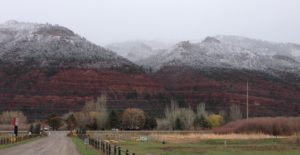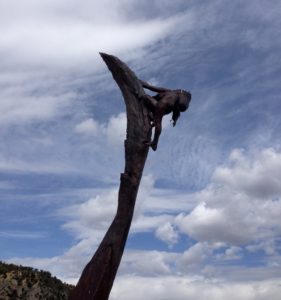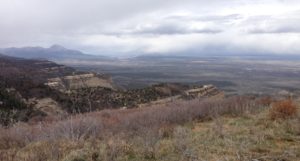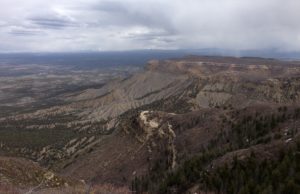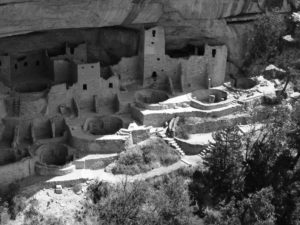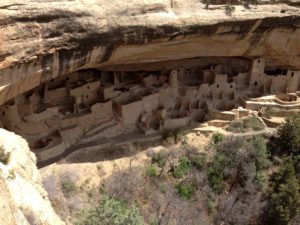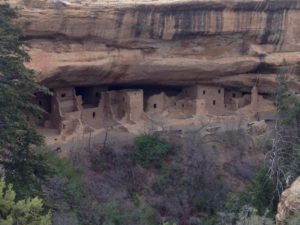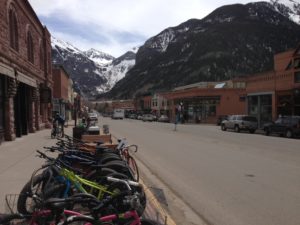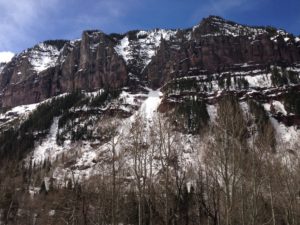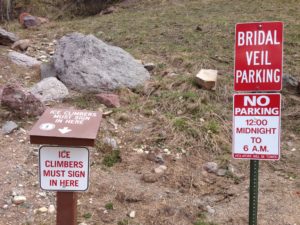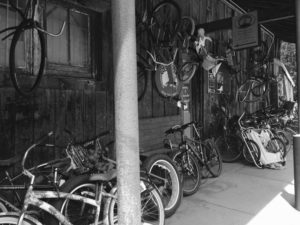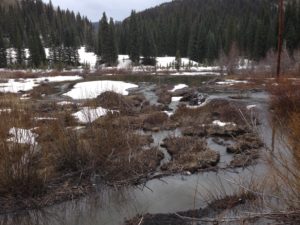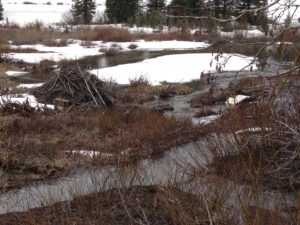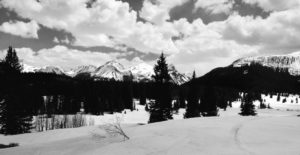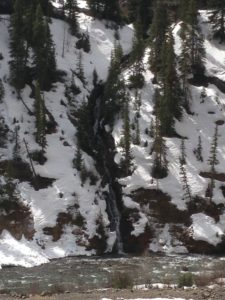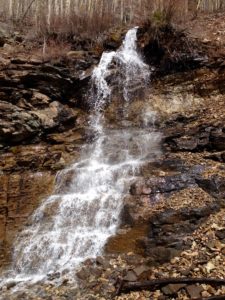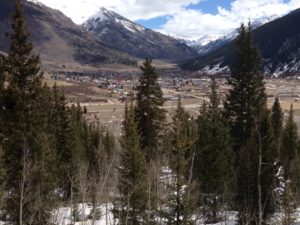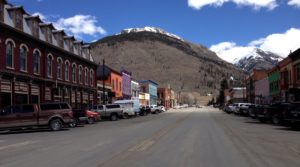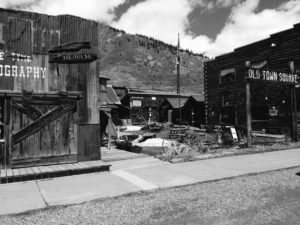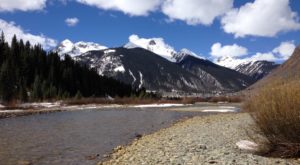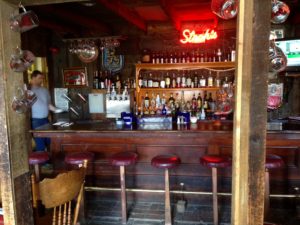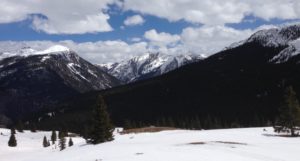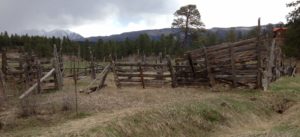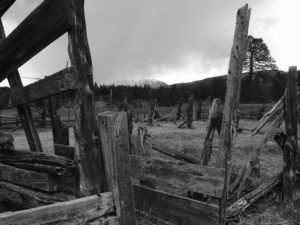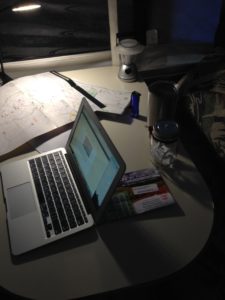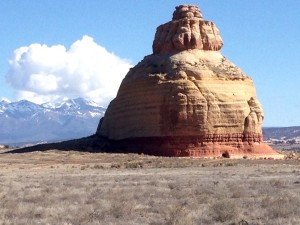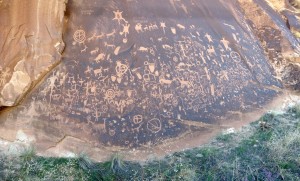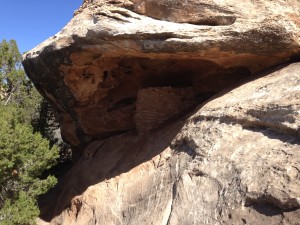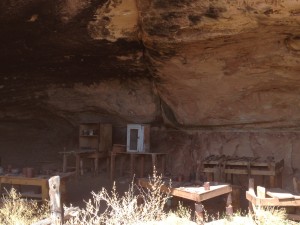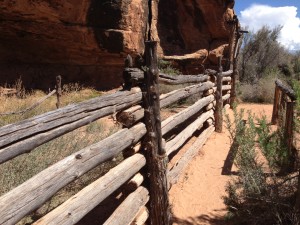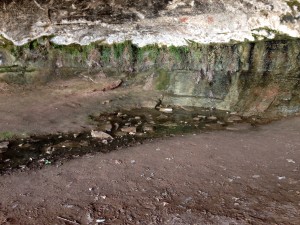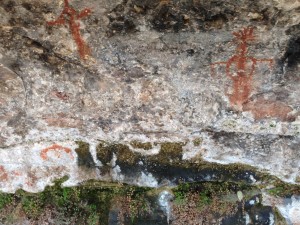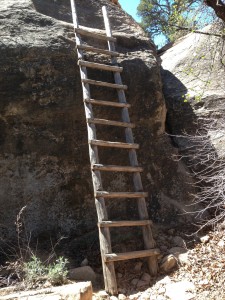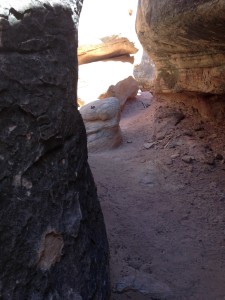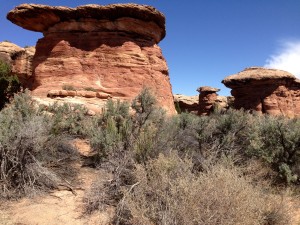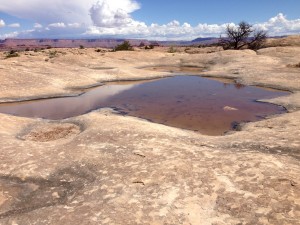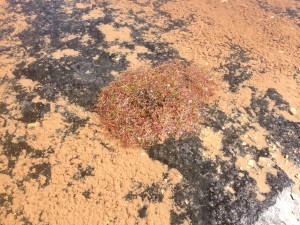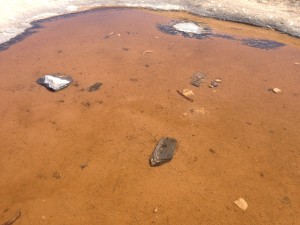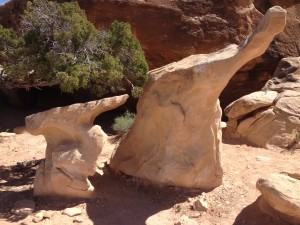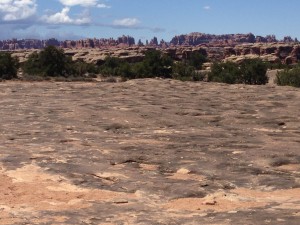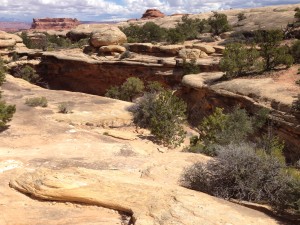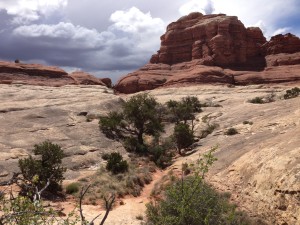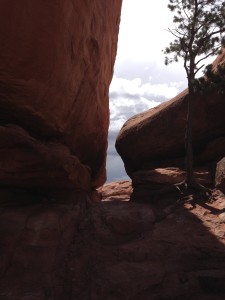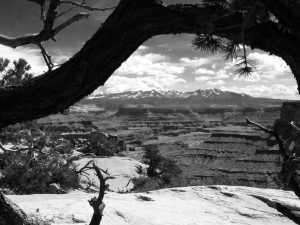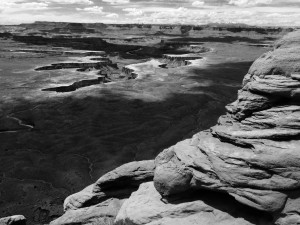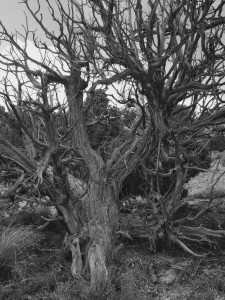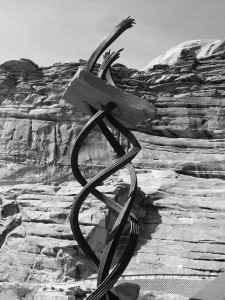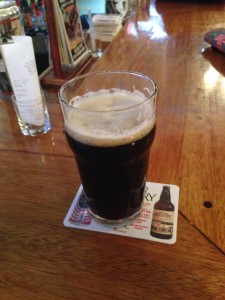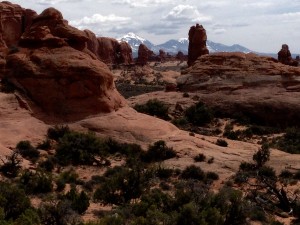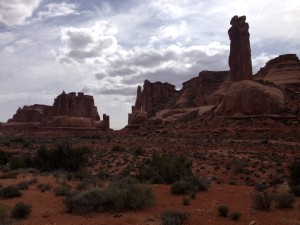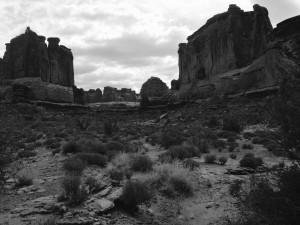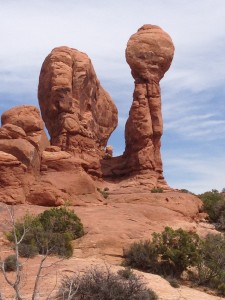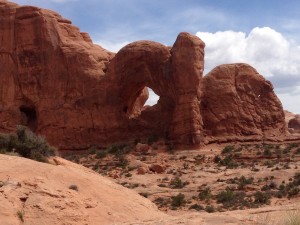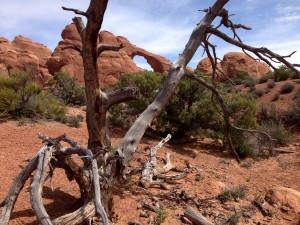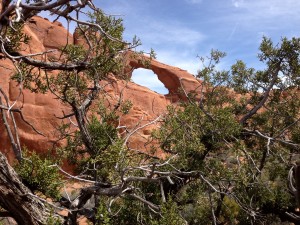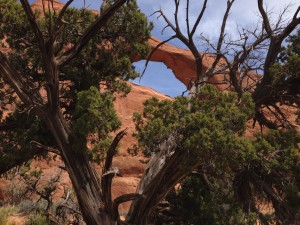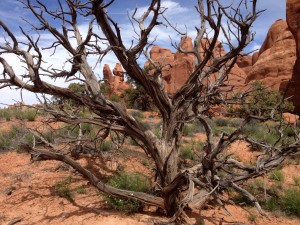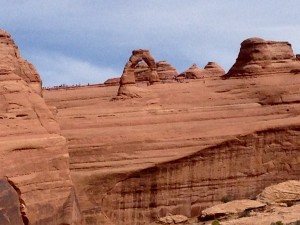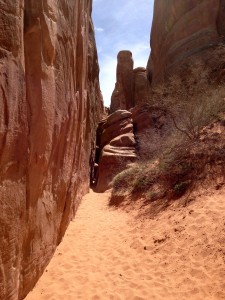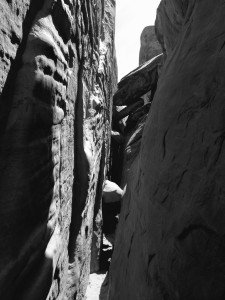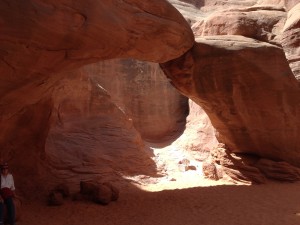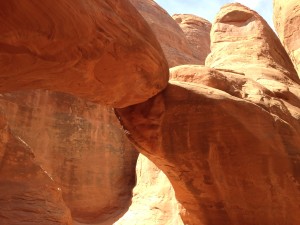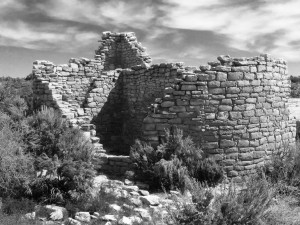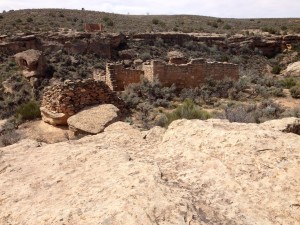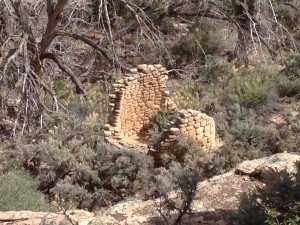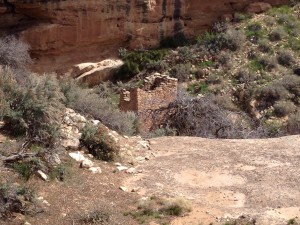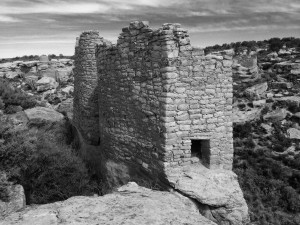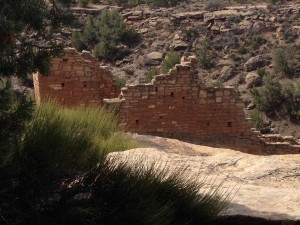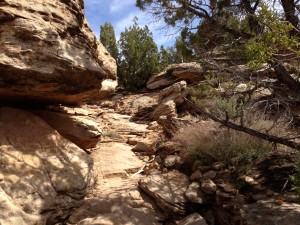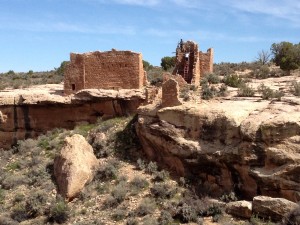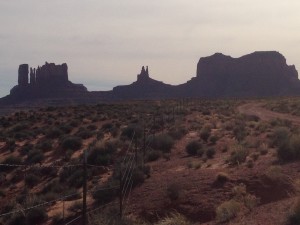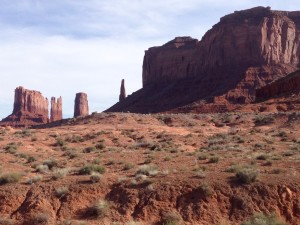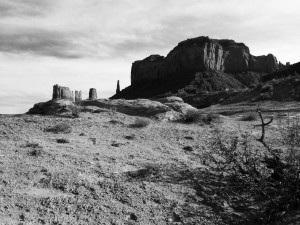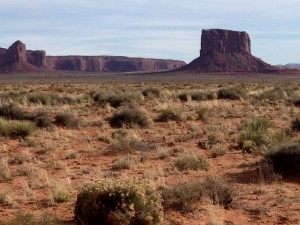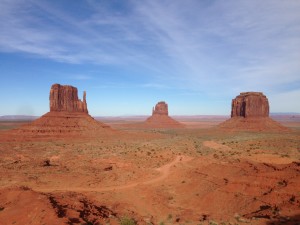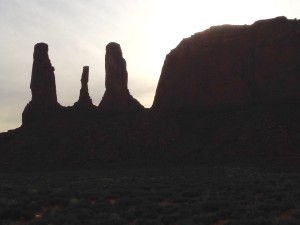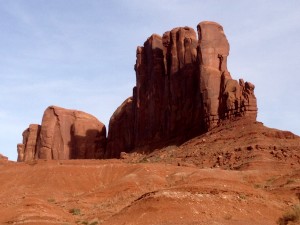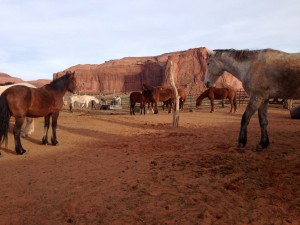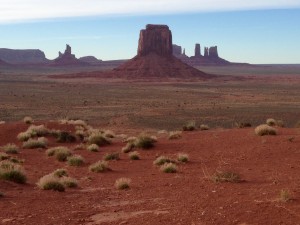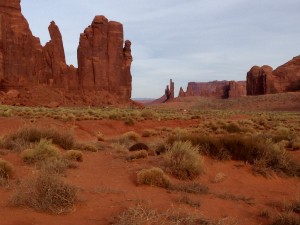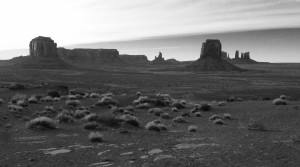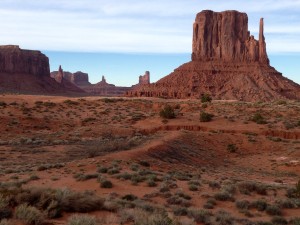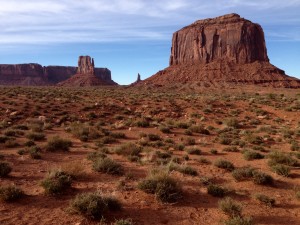Monday, April 18th, Durango to Taos
On Sunday I texted my kids and told them it looked like the morning was shaping up to be a soggy pack up and leave. Rain/mix was also in the forecast for Taos so I kinda knew I was in for it a bit.
It started out with some good fortune. The precipitation held off ’til about 9:30 in the morning, just about the time I was all buttoned up and ready to hit the road.
This is what it looked like looking out on the highway from the campground on Monday morning. As I was leaving Durango a steady rain/snow mix was coming down.
I’ve been living at altitude now for a number of weeks so doses of winter have become commonplace. But now I’m starting to feel chased around by it. I knew it had snowed in the high country along pretty much my whole route. The “top” of this drive would occur between Pagosa Springs in Colorado and Chama in norther NM. The road would be going up over 10,000 feet numerous times. There was a lot of snow up high but the roads were clear and, wet to somewhat dry, almost all the way down to Chama. When I got to Chama there wasn’t a light on in the town. No power. Heavy, wet snow all to the south and east. South of Chama I turned east toward Taos. By now it was early afternoon.
The snow had stopped but the road conditions east of Chama were less clear, much slushier. I’d say about 6 or 7″ of heavy wet snow had fallen in the upper elevations. I forge on, climbing, heading east. The plowed track is fairly clear in a lot of areas but it is beginning to narrow. I found myself climbing the mountains in a single plow track with no other choice but keep moving. Trying to turn around and retreat was not an option. There was too much snow to even consider leaving the track. There was no one else. A good thing because there was no real room to meet. I began to think that the odds of meeting a snow plow coming towards me were increasing. I was hoping it would be in an area where he could see me coming. I went from my Divine Mercy Chaplet CD to my Rosary CD and back again.
After what seemed like an eternity I caught up to a snow plow going in my direction. He was plowing and dropping grit on the road. The snow was so wet and heavy that he could only take about a foot or two bite to widen the track. I have no idea how long I followed him through the mountains . We met two cars going west. Easing past them was easy when I was right behind a plow.
On the descent into Tres Piedras we finally met a road grader coming up the hill and the pressure from driving in a narrow track faded. Shortly after going through Tres Piedras I drove out of the snow all together. The truck and the camper were caked with reddish brown dirt from the plow and my nerves were shot. I still had about 40 minutes left to Taos. It had taken me all day to go about 160 miles. I ended the day right where I began it, driving into Taos in a rain/snow mix. I think it was 60 back home that day. 🙂
